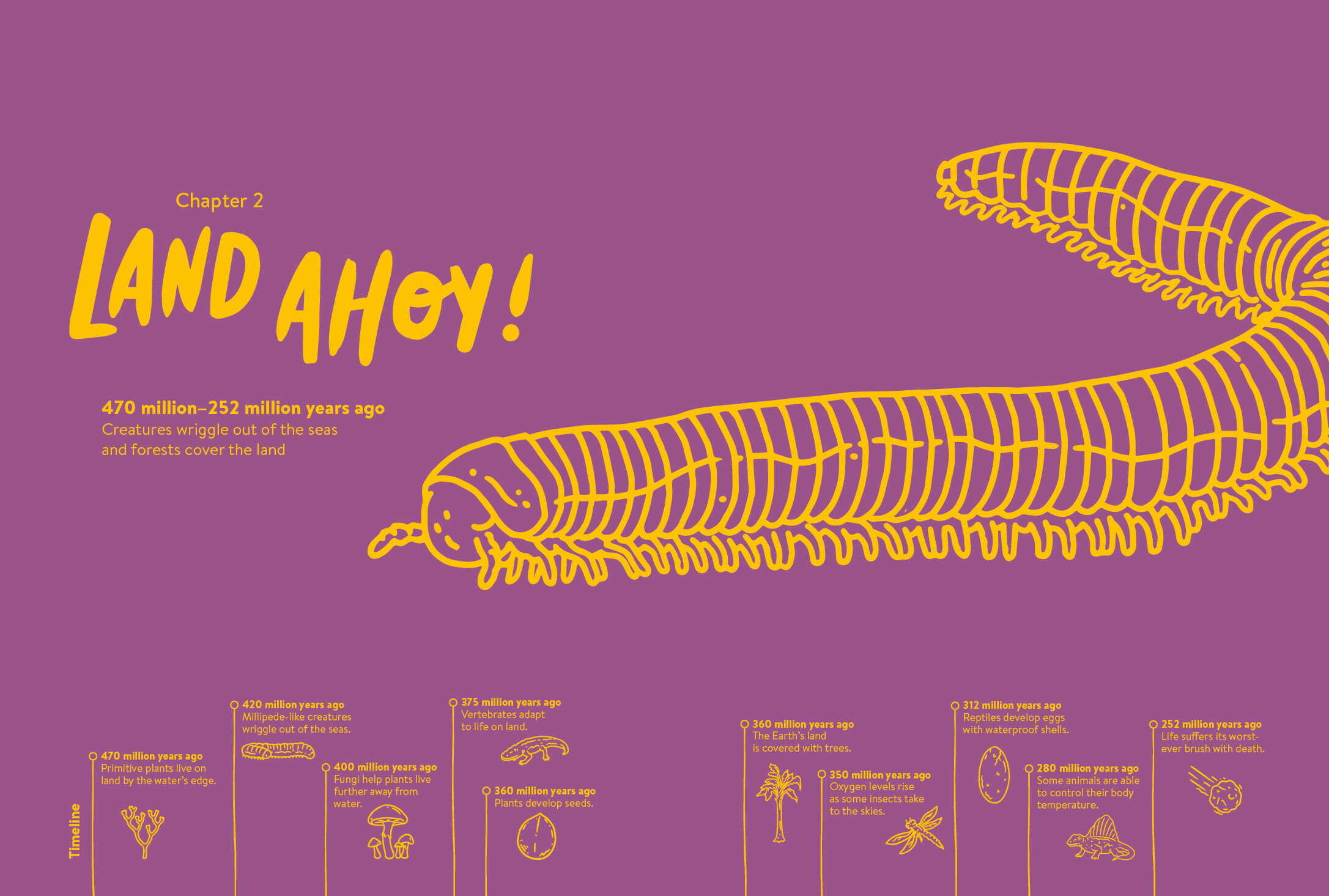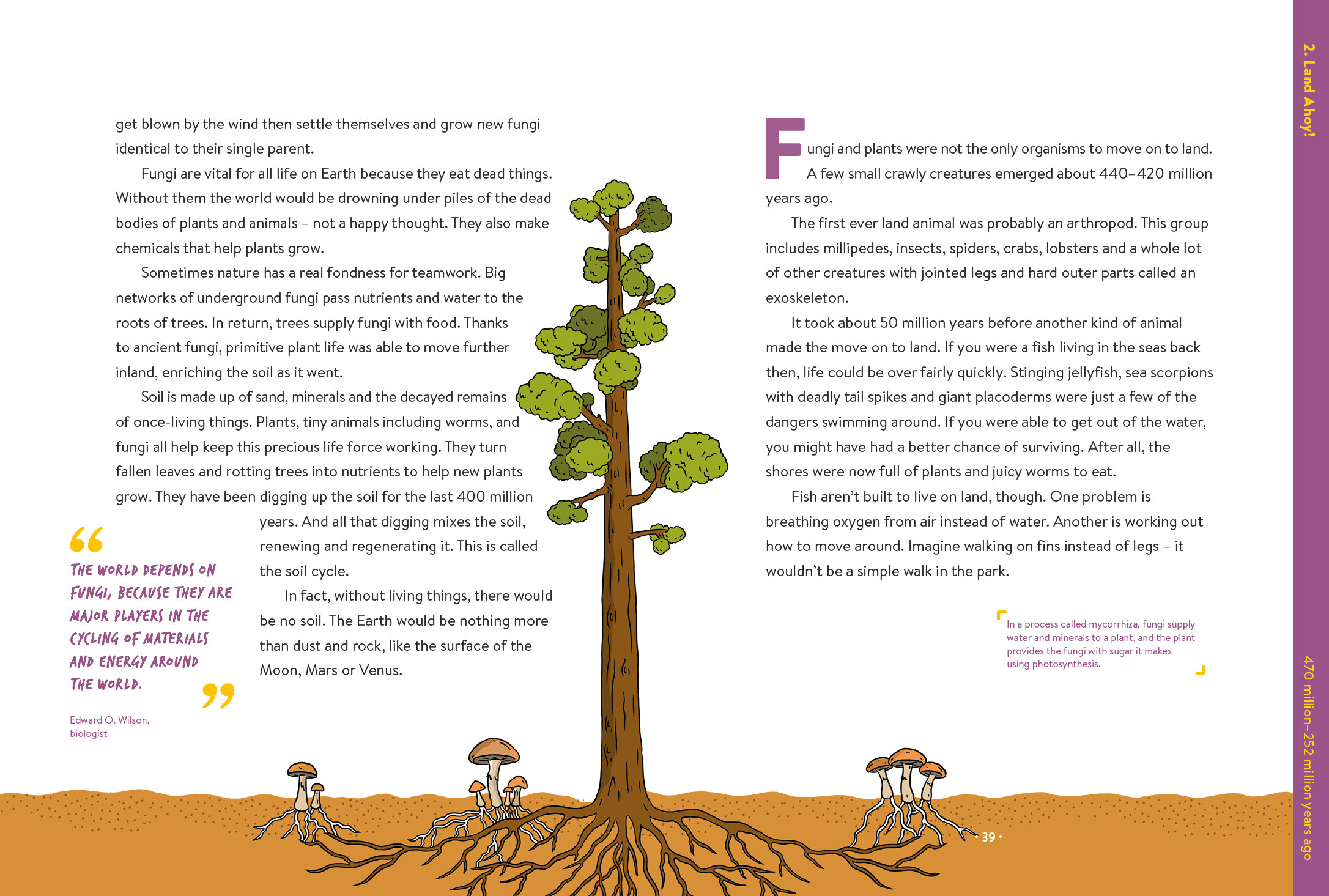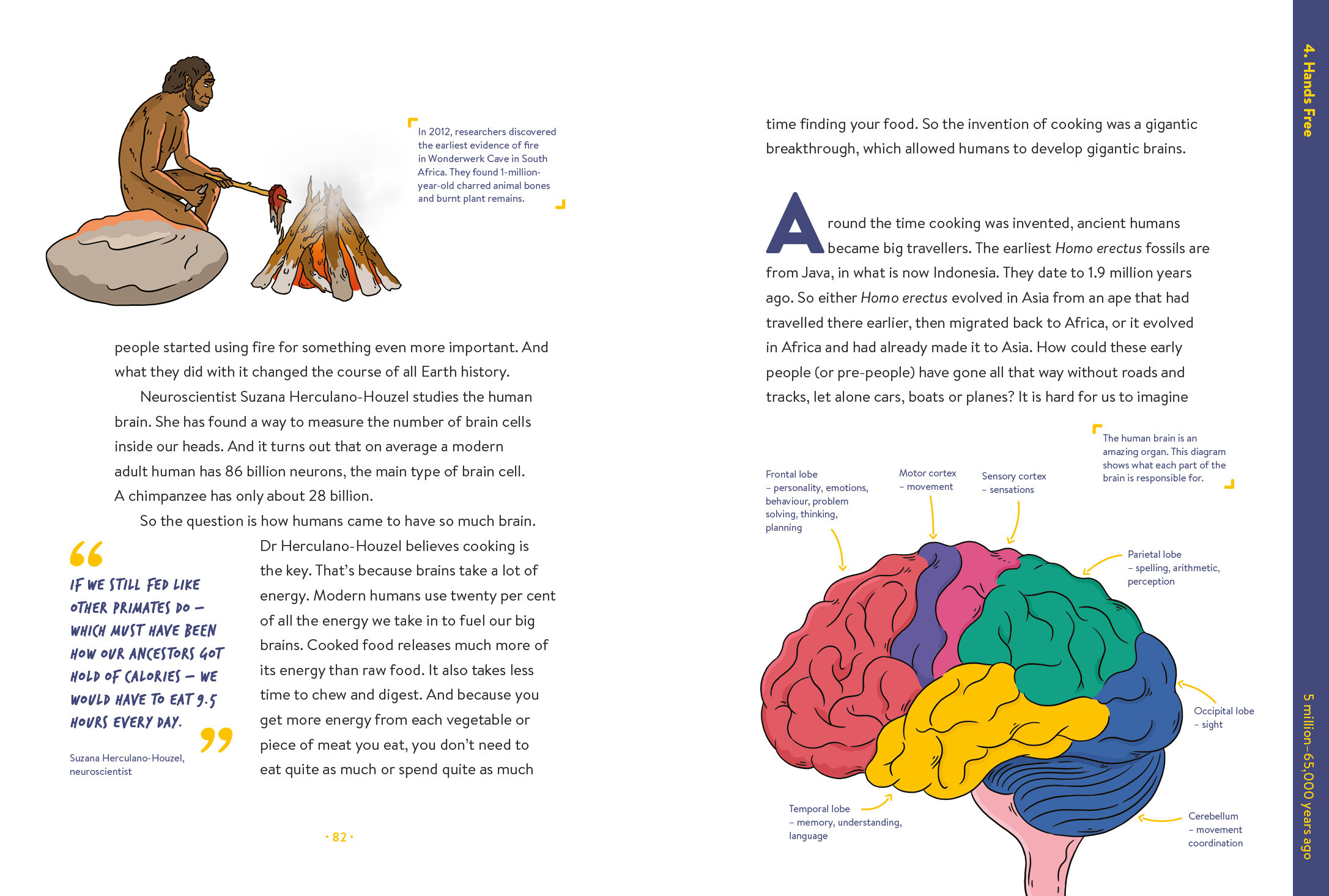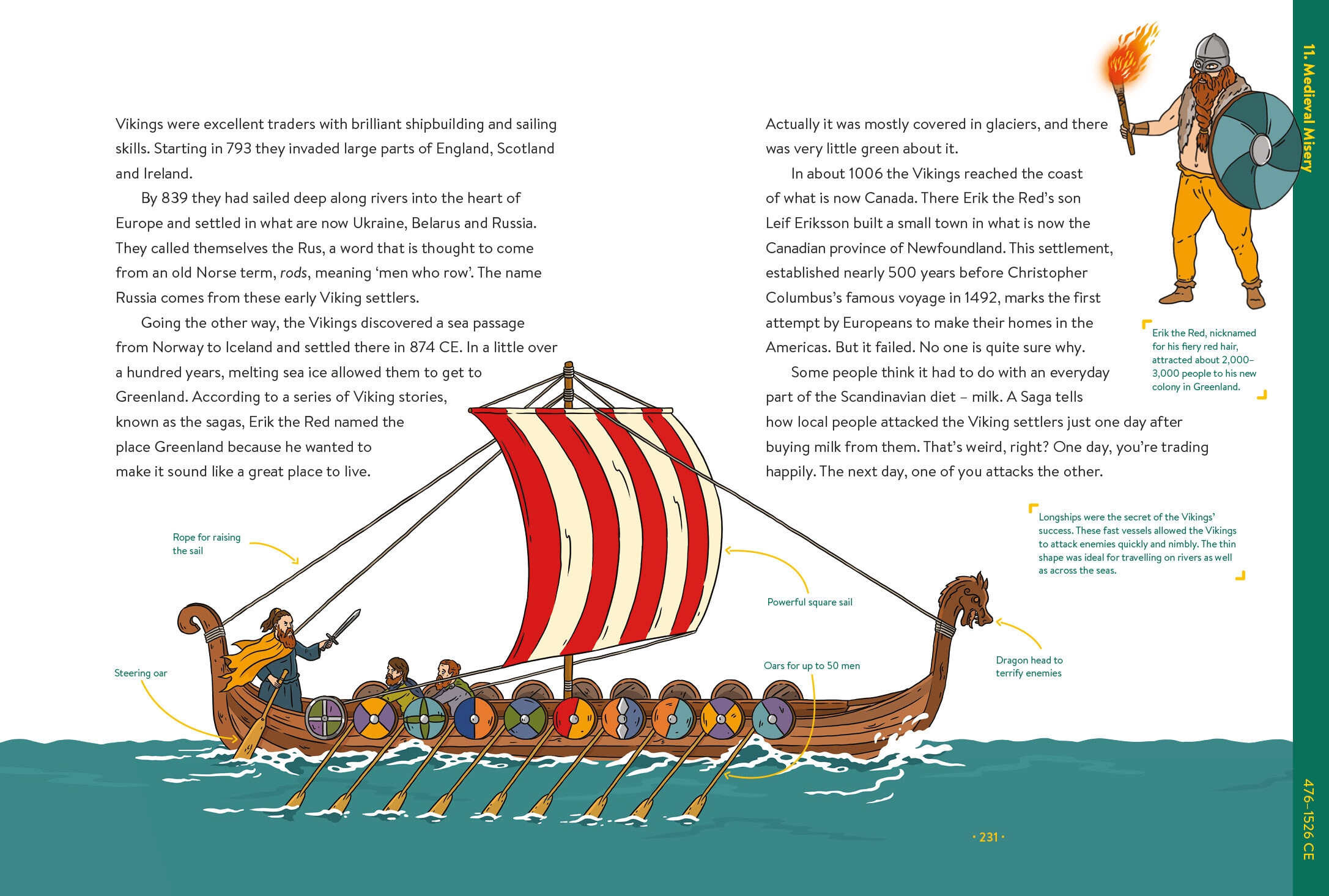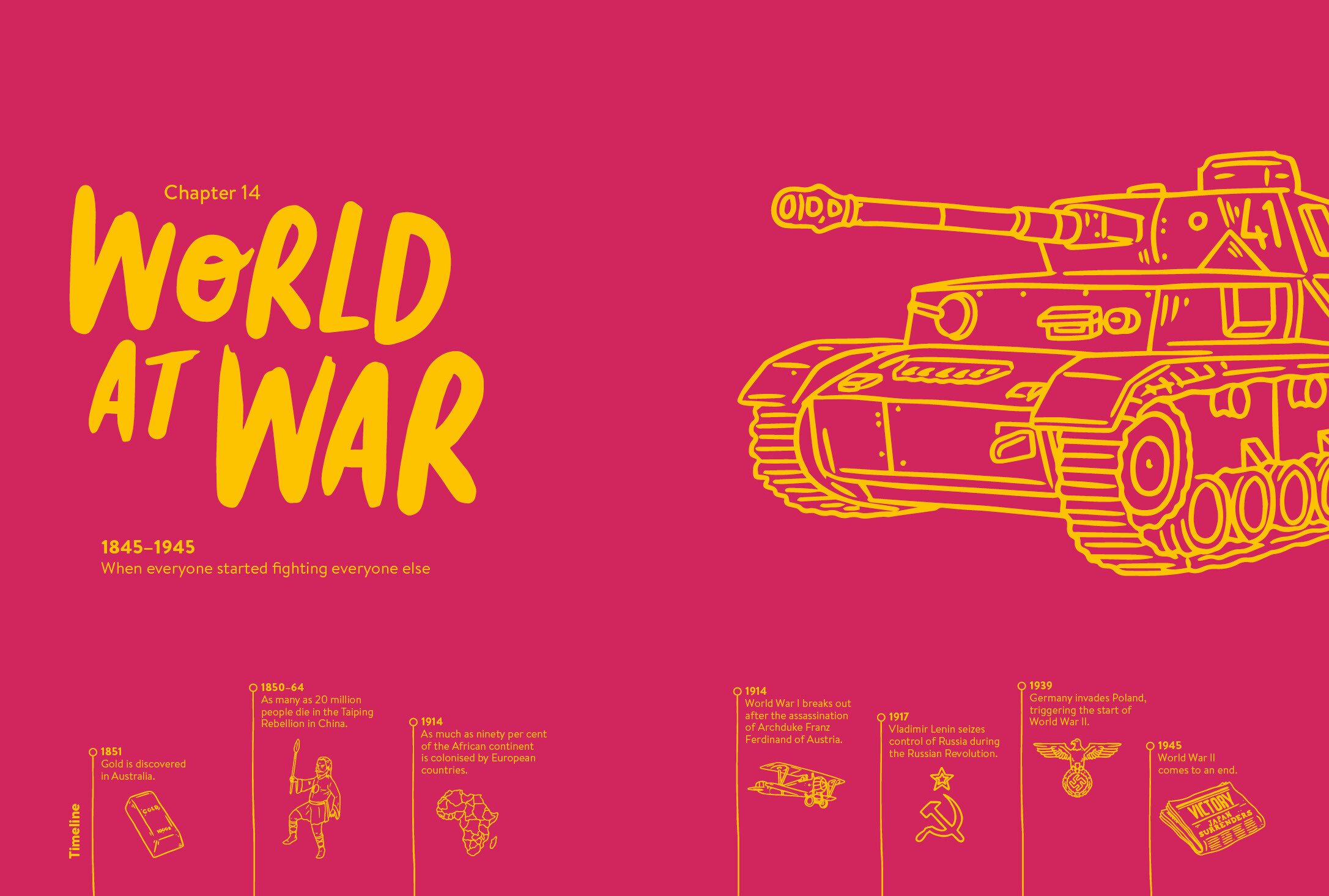Absolutely Everything – at a glance
The School Reading Lists’ five word review: Must-have for school libraries.
Children’s book title: Absolutely Everything – a history of Earth, dinosaurs, rulers, robots and other things too numerous to mention.
Children’s author: Christopher Lloyd.
Genre: Children’s nonfiction.
Illustrated by: Andy Forshaw.
Published by: What on Earth Books
ISBN: 9781999802820 (revised edition: 9781804660751)
Recommended for children aged: 7-11.
First published: Hardback 2018. (Revised: October 2023)
This children’s book is ideal for: Children who want to question, find out more, and develop original thoughts.

To see the latest price or order, click on the book cover image. As an Amazon Associate schoolreadinglist.co.uk earns from qualifying purchases.
Our review:
One Christmas when I was a child in the 80s, I was given a trilogy of books that just answered questions beginning with Why? I loved books like this – books that could be dipped into, perused, read whenever, and – best of all – they appear to convince adults I was ‘doing something useful’ with my time. Another one I remember was a compelling timeline history of flight. However, these four books that I treasured had their limitations. I wanted the how, what and where – as well as why and when. I had no sense of how developments in aerospace related to changes in cars, shipping, or trains; or how societal needs and political aspirations propelled these advances. Factual books in the 80s and 90s were narrow in scope and any knowledge I retained was in isolation and without a wider context. These books were useful for exams and quizzes, but no good for provoking questions, research or original thought.
Absolutely Everything is groundbreaking because it uses a wider historical context and synthesis as a starting point. Children can read about the Vikings, but also see what was going on in the Islamic empire, as well as finding out what the Carolingians and Charlemagne were up to. This book offers far more than just facts and knowledge to be absorbed and invites the child reader to think, make connections, and see history in a wider context. This makes it uniquely useful as a primary and early secondary resource.
Christopher Lloyd’s foreword begins with a description of a camping trip where he heard a tweeting noise coming from behind him on a beautiful day, and wondered what it would be like to speak the language of birds. As he looked around, he saw a tree, wondered what kind it was, and further wondered how old the planet might be. Unsure, he decided to look for a history of everything – a book that covered it all. But nowhere could he find one.
And so he began creating this monumental work: “Absolutely Everything a History of Earth, Dinosaurs, Rulers, Robots and other things too numerous to mention – a book that covers what happened, when it happened, where it happened, other things that happened at the same time, things that you never knew that happened, and things that will make you want to find out even more.
Covering history from the beginning of time up to the present day, across a myriad of different cultures, locations, and civilizations, this book is split into 15 hugely detailed and exciting sections.
Beginning with the big bang 13.8 billion years ago, the book asks the reader how nothing became something, and how something came out of nothing. It asks the child philosophical questions as well as presenting difficult concepts in physics in an accessible way. Throughout the text, the book delivers facts, presents complex material with explanations, and most importantly asks the reader to question and find out more. The highly illustrated text is broken up into easy chunks with detailed diagrams, photographs, graphics, eye-catching pool quotes, cartoons, and timelines.
The book moves forward through time to discuss the first life on earth, how we know what existed, and who discovered it; and answers questions related to evolution, the formation of the continents – leading up to the dinosaurs and their extinction, and the first instances of human life.
Human development is traced from two hundred thousand years ago through to the Pleistocene period 10,000 years ago and examines evidence with science and geography, and asks questions to children using the book to encourage historical empathy.
Civilizations are presented not just in terms of locations and people, but also in parallel during particular periods, giving the reader a clear sense of how the whole world was developing – a unique and helpful historical synthesis.
Using Absolutely Everything in the classroom and for home learning
- An ideal resource for pupils in years 6-8.
- A great book to encourage original thought. It’s exactly the kind of text to challenge bright children to think for themselves.
- Highly recommended for children taking competitive entrance exams – especially if there’s an interview involved. This would be a great book to discuss.
- It’s perfect for sparking ideas for home-learning or individual projects in upper KS2 and lower KS3 – or to use a starting point for a presentation, or a summer homework review.
- The accessible – yet not dumbed-down – style is bound to encourage children to want to research further on the internet.
- The book is easy to read, and easy for your child to lose a couple of hours with. It is ideal for bright children who are reluctant to read stories.
- The book is split into sections that will appeal to children who prefer non-fiction and who don’t necessarily like to read a book in chapter order.
Not necessarily an important point, but this book is a weighty tome and built to last. The chunky hardback binding means you can wrap it up like a pro as the perfect Christmas or birthday present for an 11-year-old.
On the publisher’s website, there’s a range of downloadable resources related to all the books in the What on Earth Books range, all of which are ideal for home learning.
Our verdict
Absolutely Everything is an ambitious concept and a stunningly realised achievement. I can’t wait to see ‘Absolutely Everything Else’ – the sequel that promises to cover even more in an “entirely different way”. I would highly recommend this for children aged 10-13, Year 6, 7 and 8 classrooms, and school libraries in Key Stages 2 and 3.
Many thanks to What on Earth Books for the review copy.
To order a class set of this book, please click below to order via uk.bookshop.org, an organisation that supports local bookshops, or Amazon.co.uk.
Buy from UK.Bookshop.Org Buy from Amazon.co.uk
Disclosure: If you buy books using the buttons above: we may earn a commission from Bookshop.org, whose fees support independent bookshops; as an Amazon Associate schoolreadinglist.co.uk earns from qualifying purchases.
If you like this book you might also like: Nose Knows by Emmanuelle Figueras, Every Second by Bruno Gibert, Amazing Islands by Sabrina Weiss, Literally: Amazing Words and Where They Come From by Patrick Skipworth and Planet SOS by Marie G Rhode.
Why not have a look at our magazines for children and our books for topics in KS2?
Please respect copyright and don’t copy or reproduce our review without permission. (It confuses search engines.) Sharing on social media or linking to our site’s pages is fine. Thanks.
